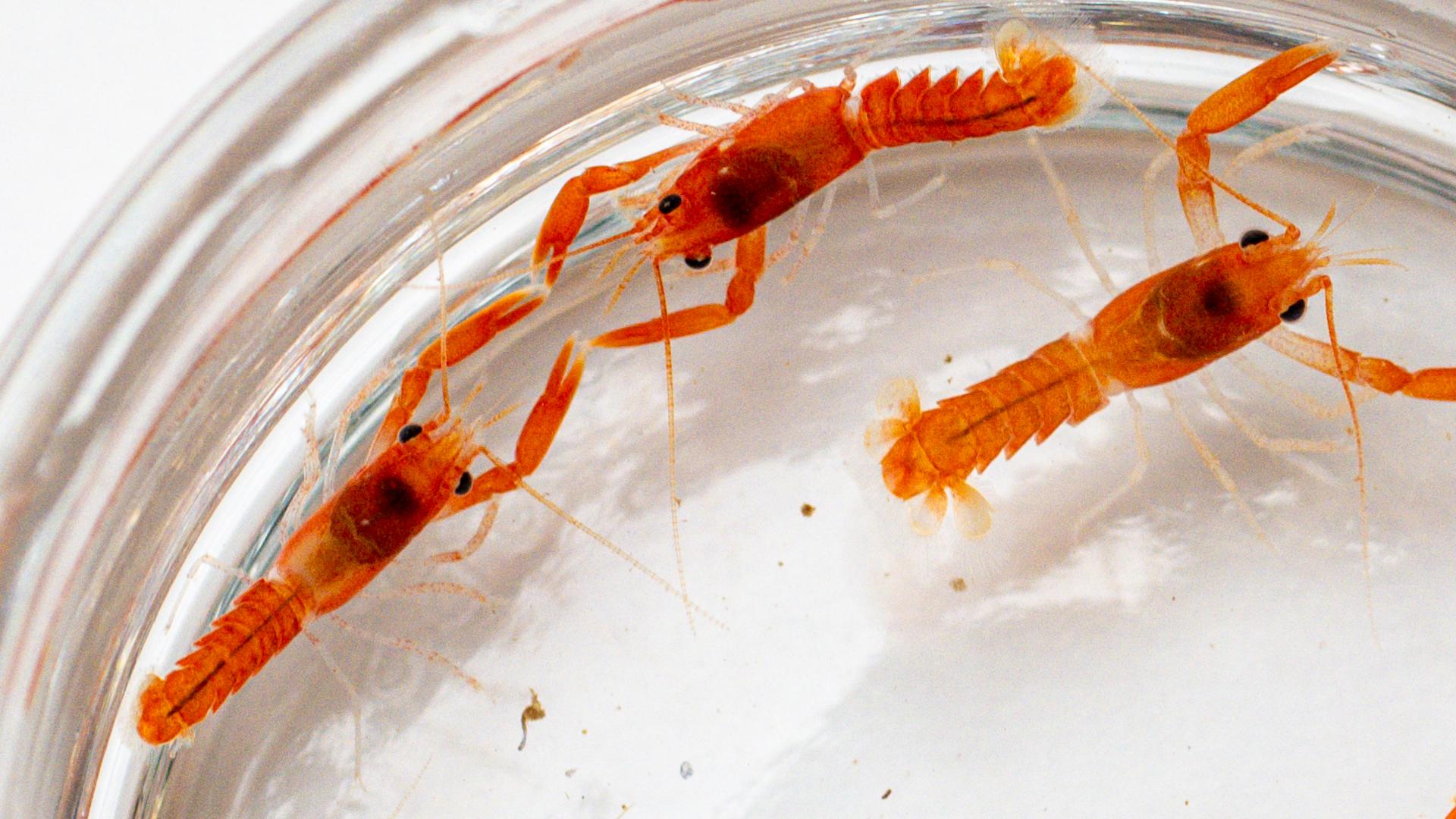BIDDEFORD, Maine — A rare, vibrant orange lobster donated to the University of New England is making an even bigger splash after giving birth to more rare orange babies.
Peaches, a one-in-30-million rarity with one claw, delivered 100 baby lobsters earlier this summer. Researchers are diving deep into the mystery of what causes this remarkable coloration.
This lab at the University of New England's Arthur P. Girard Science Center has become a nursery. Using turkey basters, Markus Frederich, a professor of marine sciences, and UNE student Ruby Motulsky, a marine sciences major, carefully remove tiny lobsters into containers. One hundred babies were hatched earlier this summer.
They are the offspring of Peaches, caught by a fishing crew in Casco Bay and donated to UNE last year. Half of the larvae initially appeared blue but have since molted into the typical brown. But the remaining tiny creatures share their mom's unusual coloring.
"They will stay orange, and when they grow up, they will be full-sized orange lobsters," Frederich said with a smile.
"To see that initial coloring right off the bat was super interesting," Motulsky enthused.
The professor and his students are working on cracking the code of why these lobsters come in vibrant colors, which could be genetics to the food they eat.
"Each larvae stage is a new opportunity to look at the gene expression in that stage, making it easier to identify which genes cause this coloration," Frederich enthused.
Peaches isn't the only lobster mama at UNE. A traditionally colored lobster, Norma hatched 40 babies this summer.
Over the years, UNE has been a magnet for lobsters with a colorful flair -- blue, split-colored calico, and yellow; those colorful numbers could increase next year.
Another rare orange lobster, Pineapple, is expected to hatch eggs next spring.
"She is carrying thousands of eggs... which she keeps between eight to 10 months," Frederich said.
Motulsky was awarded a $5,000-dollar grant from the Bioscience Association of Maine to conduct the research this summer. Scientists and students use noninvasive techniques that do not harm the tiny critters while extracting genetic samples from their shells. The hope is to release findings about this natural mystery sometime next year.

